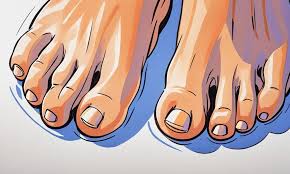Ovulation Signs Help to Get Pregnant
When you are ovulating, your body gives you indications. Once you are aware of these ovulation signs, you may boost the speed at which you conceive by being careful to time your sexual activity properly (during the days leading up to ovulation). You may better subject yourself to the ovulation predictor that will let you know when am I ovulating.
In the read below, we will be getting through the signs of ovulation and how you could better detect them by using the free ovulation calculator.
Ovulation: What Is It?
Ovulation is the simple process by which an egg leaves an ovary. If the egg is not fertilized, it only survives for up to 24 hours.
Why is this; The menstrual cycle is divided into stages, which are covered in greater detail below. The luteal phase (from ovulation to the day before the next period) typically lasts between 12 and 16 days, with 14 days being the average. For the same woman, the luteal phase remains largely constant. On the other hand, the follicular phase, which comes before ovulation, might change from cycle to cycle for the same woman.
The first day of your menstruation marks the start of the follicular phase, which lasts until the day of ovulation. The day following ovulation to the day before your subsequent menstruation is known as the luteal phase. During all these phases, you may feel different signs that may make you feel weird or changes your mood. And this is the time when you actually need to make use of the best ovulation predictor so as to confirm if you are ovulating or not.
Ovulation Symptoms:
One of the best ways to predict 100% ovulation is none other than using the ovulation predictor. Once you are familiar with the events that take place during the menstrual cycle, it will be simpler to recognize these. On the first day of your period, your menstrual cycle starts, and it concludes the day before your subsequent period. While cycles typically last 28 days, anything between 21 and 35 days is seen as normal. We shall employ a 28-day cycle in order to describe the occurrences. The occurrence of changes that take place in the uterus and ovary is known as the menstrual cycle, which is regulated by hormones.
Cervical Mucus:
A totally natural and typical material called cervical mucus, commonly referred to as cervical fluid (CF), is created by glands in the cervix and secreted into the vagina. It functions as a sperm transport and barrier (depending on the phase in the cycle). And when you confirm your ovulation by using the fertility calculator, you may get to understand that this is the phase when cervical mucus will provide transport way to the sperm. It contains electrolytes, carbohydrates, and proteins and is made up of 93 to 98 percent water depending on the phase of the cycle.
Your cervical mucus varies in a predictable way throughout each cycle as a result of hormones.
The Cervix Alters:
The female reproductive system heavily depends on the cervix. Your cervix, which links your vagina to your uterus, serves as a barrier that opens when you’re fertile to let sperm enter your uterus and closes at other times. The changes your cervix undergoes might help you determine when ovulation is about to occur. And rest for the accurate idea, we suggest you employ the best chances of getting pregnant calculator.
Body’s Baseline Temperature (BBT):
Your BBT is your resting body temperature, which often occurs when you are asleep. One of the greatest methods to figure out if and when you ovulated is to monitor your BBT. High progesterone levels will cause your BBT to slightly increase during ovulation and remain increased until the conclusion of your cycle (cycle days 15-20 in the events table). Although you can’t use this natural fertility indication to aid you in this cycle, you may use it to forecast whether you’re fertile in subsequent cycles because it happens after ovulation.
You must take your BBT using a digital thermometer that can detect one-tenth of a degree because the increase is just 0.5 to 1.0 degrees F. When you utilise the ovulation predictor as per our guidance, you will actually get to know how good it is in estimating thechance of ovulation for you.





More Stories
An Overview of Total Health Institute Complaints
Keto ACV Gummies: A Tasty Twist on Your Low-Carb Lifestyle!
The Ultimate Guide to Papxnmoxk